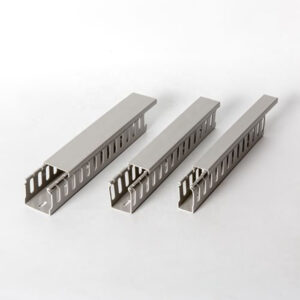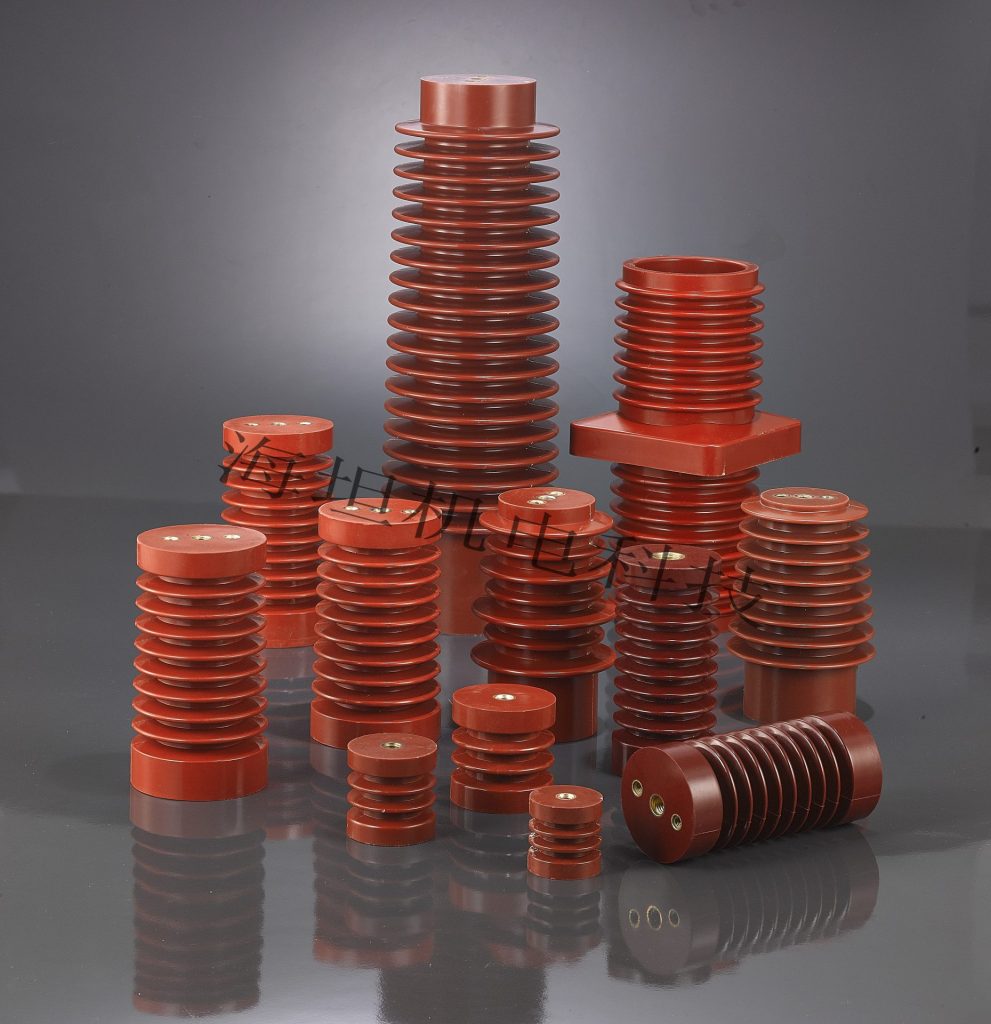PVC Slotted Cable Duct Supplier Guide: How Plastic Wire Ducts Are Made
Introduction
Ever wondered what keeps all those wires in a control cabinet neat, secure, and safely in place? That’s the job of a PVC slotted cable duct. And if you’re sourcing or specifying for electrical enclosures, data centres, or telecom systems, understanding how these cable ducts are made—and how to choose the right supplier—can make a world of difference.
In this guide, I’ll walk you through the essentials: from the types and materials of plastic wire ducts, to how they’re manufactured and what to look for in a supplier. Whether you’re new to panel building or just need to level up your knowledge, you’re in the right place
What Is a PVC Slotted Cable Duct?
A PVC slotted cable duct is a rigid plastic channel with evenly spaced slots on both sides, designed to route, organize, and protect wires inside electrical enclosures. These ducts are made from flame-retardant, high-impact rigid PVC and are essential for safe, efficient wiring in commercial and industrial settings.
They’re also referred to as:
- Plastic wire ducts
- PVC wire ducts
- Wire troughs or raceways
- Telephone wire ducts (when used in telecom setups)
These ducts often feature smooth, burr-free edges to prevent damage to wire insulation and injury to hands during installation or maintenance. The cover stays firmly in place—even in vertical installations or environments with vibration, like on ships or trains.
Types of Wire Ducts
Different projects call for different duct types. Here are the most common ones:
Standard Slotted Duct – The go-to option for most control cabinets.
Narrow Slot Duct – Designed for high-density wiring and small-diameter cables. Narrow slots offer multiple access points for fine wires.
Wide Slot Duct – Offers more space for larger or bundled cables that need more routing freedom.
Solid Wall Duct – Fully enclosed and perfect for applications without the need for wire exit points. Ideal where no break-outs are required.
Closed Slot Duct – Provides better cable retention while still maintaining accessibility through smaller openings.
Economical Duct – A cost-effective solution offering either slotted or solid versions for general-purpose cable management.
DIN Rail-Compatible Ducts – Match standard dimensions for industrial panel installations.
Low-Smoke, Halogen-Free Ducts (e.g. Noryl) – Made from materials like PPO or Polypropylene for fire-critical or eco-friendly environments.
Each type supports different layout needs and wire densities. High-quality ducts often come with perforated break points to allow easy, burr-free segment removal.

Why PVC? Key Material Properties
PVC (Polyvinyl Chloride) is the most widely used material for slotted wire ducts. Here’s why:
- Excellent electrical insulation
- Lightweight and easy to cut
- Flame-retardant (often UL 94 V-0 rated)
- Corrosion-resistant
- Cost-effective
- Maintains shape and strength in most installation conditions
Other materials used in duct manufacturing include:
Polypropylene (PP) – Halogen-free, eco-friendly, good oil resistance
PPO (Polyphenylene Oxide) – High heat resistance and low smoke emission, but sensitive to solvents like ether and gasoline
Aluminum – Lightweight, corrosion-resistant (anodized), ideal for high-heat environments
The choice of material depends on application requirements like flame resistance, weather resistance, and chemical exposure. For outdoor installations, dual-layer ducts with a weatherproof exterior and self-extinguishing inner layer are ideal.
Wire Duct Production Process
Here’s a simplified breakdown of the wire duct production process:
- Extrusion – Rigid PVC pellets are melted and pushed through a die to form the duct shape.
- Slot Cutting – Precision machinery cuts consistent side slots into the duct.
- Base Perforation – Holes for mounting are punched according to DIN 43659 or DIN EN 50085-2-3 standards.
- Cover Production – Snap-on or sliding covers are produced and matched.
- Sizing & Finishing – Ducts are cut to standard lengths (typically 1m or 2m), cleaned, and packed.
- Quality Control – Each batch is tested for dimensions, flame resistance, insulation properties, and structural strength.
A high-quality duct should feature standardized dimensions and consistent tolerances, smooth surfaces, and strong fastening mechanisms that allow secure cover retention even under strong vibration.
Common Applications
PVC slotted cable ducts are found across multiple industries:
Control Panels – Organize power and signal wires for easy maintenance
Telecom Cabinets – Often used as telephone wire ducts for structured cabling
Automation Systems – Manage wiring in industrial machines and robots
Solar & Renewable Energy – Protect DC wiring in solar combiner boxes
Commercial Buildings – Keep HVAC and electrical wiring neat and accessible
Residential Installations – Route wires cleanly for lighting and appliances
For outdoor environments, materials with waterproof and UV-resistant features should be selected.
Benefits of PVC Slotted Cable Ducts
Why use slotted ducts at all? Here are the biggest advantages:
Organized Wiring – Makes layout clear and serviceable
Enhanced Safety – Prevents abrasion, electric shorts, and accidental contact
Faster Maintenance – Cables can be added, replaced, or rerouted easily
Space Efficiency – Helps in compact panel designs
Compliance – Meets standards like UL, RoHS, CE, and DIN EN 50085
Reliable Fixation – Covers remain secure even in vertical or high-vibration installations
Compared to metal conduits or open wire harnessing, PVC wire ducts offer more flexibility and ease of use.
What to Look for in a PVC Slotted Cable Duct Supplier
Choosing the right supplier is just as important as choosing the right duct. Here’s a quick checklist:
Material Quality – Rigid PVC, UL-certified, halogen-free options available
Precision Manufacturing – Clean slots, smooth edges, DIN-compliant perforations
Customisation Options – Sizes, colours, logos, or OEM packaging
Stock Availability – Short lead times, bulk-ready inventory
Technical Support – Datasheets, samples, and responsive service
Compliance Certifications – UL, RoHS, REACH, ISO 9001, CE, etc.
Reliable suppliers should also provide accessories such as screws, washers, and sealing rings to ensure safe and complete installation.

FAQs
Q: What’s the difference between a PVC wire duct and a telephone wire duct?A: Functionally, they’re the same. The name depends on the application—telephone wire ducts are typically used in telecom installations.
Q: Can I use PVC slotted ducts in outdoor environments?A: Only if rated for UV and water exposure. Otherwise, they’re better suited for indoor use.
Q: What certifications should a good duct meet?A: Look for UL 94 V-0 flame rating, RoHS, CE, and DIN EN 50085 compliance.
Q: How do I cut PVC wire ducts cleanly?A: Use a fine-toothed hacksaw or PVC cutter. Burr-free cuts make installation easier and safer.
Q: What should I consider when selecting wiring duct size?A: Measure the total bundle diameter, leave 25–30% extra space, and select based on slot width and ventilation needs.
Q: How do wiring ducts differ from raceways?A: Raceways are typically used for lighting and wider cable runs. Wiring ducts are optimized for panel wiring, with open slots for easy access and routing.
Conclusion
From understanding the wire duct production process to knowing what makes a reliable PVC slotted cable duct supplier, you’re now equipped to make smarter, safer, and more informed decisions. These unsung heroes of wiring infrastructure may seem simple—but their role is absolutely critical in every control panel, network cabinet, and equipment bay.
Whether you’re designing from scratch or retrofitting a system, the right wire duct makes all the difference. Need help choosing one? Reach out. We’re here to make your wiring easier, cleaner, and safer.
--- END ---
© Copyright 2024 China Haitan Electromechanical Technology Co., Ltd. All rights reserved.SUPPORT BY:JUNJ Privacy Policy

 E-mail:
E-mail:  No. 20 Lingyun Road, Dongfeng
No. 20 Lingyun Road, Dongfeng 
